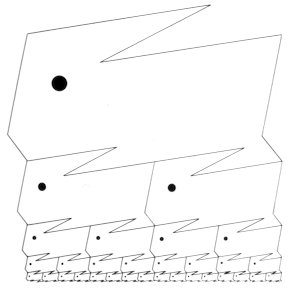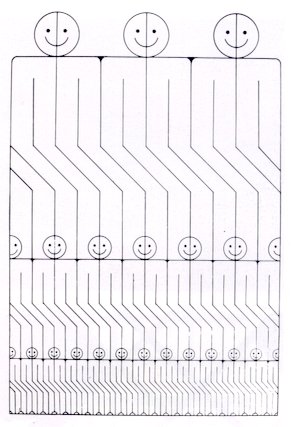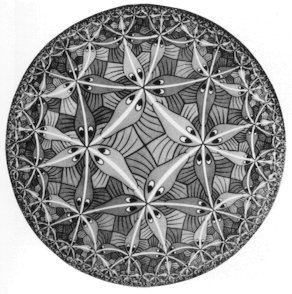|
(ii) Divisions using concrete shapes It is not difficult to imagine how difficult it is to divide using concrete and similar shapes which have complex outlines. In contrast to other two examples easier to understand
(Figs. 219, 221), the work of Escher below (Fig. 220) makes a delicate
difference between the shapes in the same kind. Specifically, assemblies
of two kinds of fishes drawn using a little thick gray or a little light
gray are made. But when we see them carefully, we find that the shapes
of the fishes are different; one has a head which is a little bending to
the left (fishes with a light gray color), and another has a head which
is a little bending to the right (fishes with a thick gray color). In a
word, the work is divided using two kinds of groups of configurations with
different sizes. In addition, the two kinds of shapes are designed so that
the difference between the two are not recognized, which make us feel that
the work is made of a kind of similar shapes. Concrete shapes are even
suitable for the camouflage of such a trick.
|


